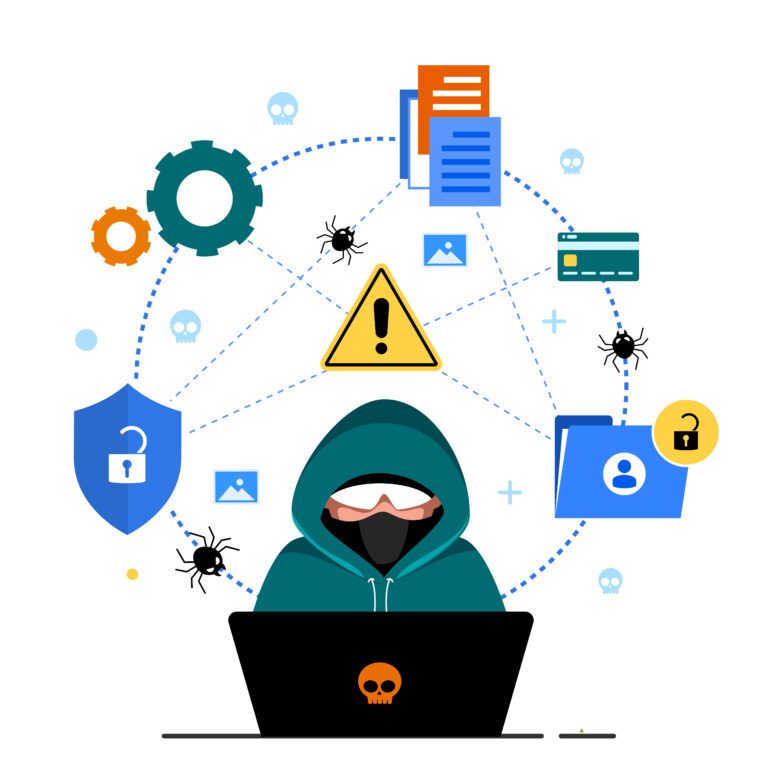
7 Shocking Cyber Security Threats Every Business Must Know
Cyber security threat awareness is more crucial than ever. With cybercrime expected to cost the world $10.5 trillion annually by 2025, understanding what you’re up against is key. From phishing and ransomware to insider sabotage, the risks are evolving and spreading fast.
Let’s break down the 7 most shocking cyber security threats impacting businesses and individuals, and how to protect yourself against them.
What is a Cyber Security Threat?
A cyber security threat is any possible danger that seeks to exploit your digital assets, data, or systems. These threats aim to steal, corrupt, or deny access to critical information. They can come from external hackers, disgruntled employees, or even unintentional mistakes.
Why Cyber Security Threats Are Escalating
The cyber threat landscape is expanding faster than ever, and here’s why:
Digital Transformation and Data Dependency
As businesses go digital, they accumulate massive data sets. This makes them attractive targets for cybercriminals. More data = more risk.
Remote Work and Cloud Risks
Work-from-anywhere culture has increased reliance on cloud services, often without proper encryption or monitoring.
1. Phishing Attacks
Phishing remains the most common and damaging threat.
How Phishing Works
Attackers disguise themselves as trustworthy entities via email, SMS, or social media, luring victims into clicking malicious links or revealing login credentials.
Real-World Examples of Phishing
Target’s data breach (2013): Caused by a phishing email to a third-party vendor.
Google & Facebook lost over $100 million to a fake invoice phishing scam.
2. Ransomware Infiltrations
Ransomware is on the rise — and it’s brutal.
How Ransomware Locks You Out
This malware encrypts your data and demands payment (usually in cryptocurrency) for the decryption key.
Notable Ransomware Cases
Colonial Pipeline (2021): Ransomware attack led to fuel shortages across the U.S.
Baltimore City suffered a $18 million loss due to a ransomware event.
3. Insider Threats
Not all threats come from the outside.
Malicious vs. Negligent Insiders
Malicious Insiders: Employees who deliberately sabotage or steal.
Negligent Insiders: Those who expose data through mistakes.
Prevention Strategies
Implement access controls.
Conduct regular audits.
Train staff on data handling policies.
4. DDoS (Distributed Denial of Service) Attacks
These attacks aim to take your business offline — literally.
How DDoS Disrupts Services
A DDoS attack floods a server or network with traffic, making it unavailable to real users.
Mitigation Techniques
Use anti-DDoS software.
Implement traffic filtering systems.
Monitor networks for unusual spikes.
5. Zero-Day Exploits
These are vulnerabilities no one knows about — until it’s too late.
What Makes Zero-Days So Dangerous
There’s no patch available.
Attacks happen before developers can react.
Case Study: A Famous Zero-Day Breach
The 2017 Equifax breach exploited an Apache Struts vulnerability, exposing data of 147 million people.
6. IoT Vulnerabilities
Your smart gadgets could be cybercriminals’ next playground.
Why Smart Devices Are Easy Targets
Often lack built-in security.
Rarely updated or monitored.
How to Secure IoT Networks
Use a separate Wi-Fi network for IoT.
Change default passwords.
Disable unnecessary features like remote access.
7. Social Engineering Manipulations
It’s not always about code — sometimes, it’s about tricking people.
Psychological Tricks Behind the Attacks
Hackers use urgency, fear, and authority to manipulate victims into revealing sensitive data or access credentials
Famous Social Engineering Breaches
Kevin Mitnick, a notorious hacker, breached companies using only phone calls and persuasion.
Twitter hack (2020) involved social engineering to gain access to internal tools.
How to Strengthen Your Cyber Defenses
Employee Training and Awareness
Your first line of defense is a well-informed team. Simulate attacks and teach employees to spot suspicious activities.
Multi-Layered Security Systems
Use firewalls, anti-virus software, and multi-factor authentication (MFA).
Regularly update all systems and backup data.
For further reading, CISA’s Cyber Essentials offers foundational best practices.
FAQs About Cyber Security Threats
1. What’s the most common cyber security threat?
Phishing is currently the most frequent and successful attack vector.
2. How do I know if I’ve been hacked?
Unusual logins, slow system performance, missing files, or strange messages are red flags.
3. Can small businesses be targeted?
Yes — small businesses are prime targets due to weaker defenses.
4. Is antivirus software enough?
No. It’s only part of a layered defense strategy that should include MFA, firewalls, and education.
5. What is the cost of a data breach?
According to IBM, the average cost is $4.45 million as of 2023.
6. How often should cybersecurity audits be conducted?
At least once a year, or quarterly for high-risk environments.
Conclusion
Cyber security threats are no longer a futuristic concern — they’re a present reality. From ransomware to insider threats, businesses must stay alert, informed, and proactive. Implementing robust defenses, training your teams, and regularly reviewing your systems can make all the difference.
